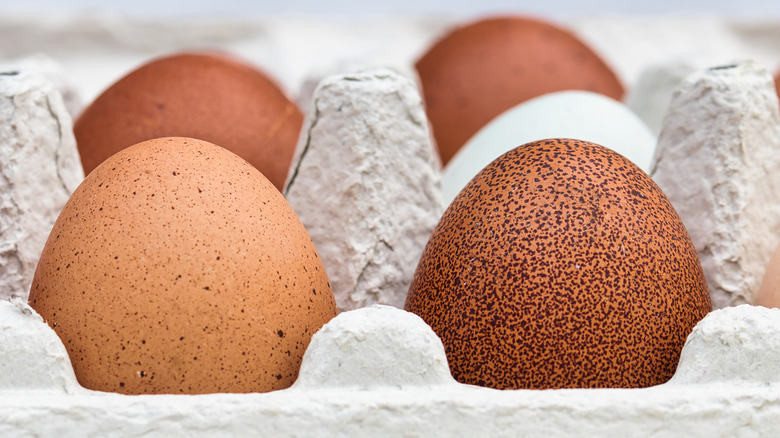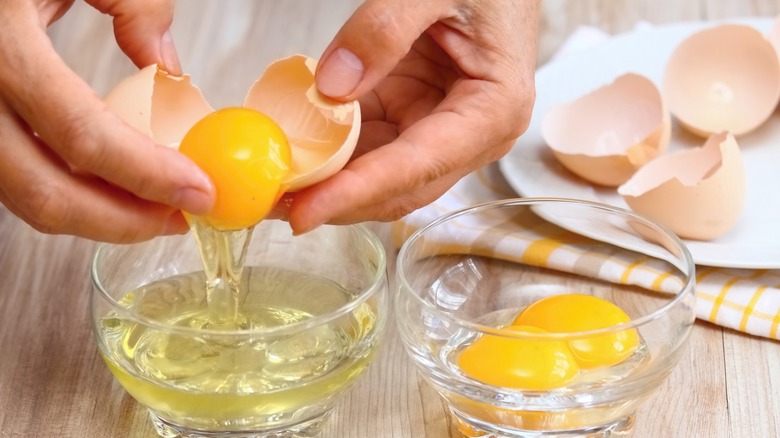The Real Reason Eggshells Are Sometimes Spotted
Eggs are a hearty staple of many of our favorite breakfast dishes, from a loaded, cheesy omelet to a plate of scrambled eggs with a side of toast. However, they aren't just a breakfast food. They are a central ingredient in many dishes, from sweet pastries like cakes to delicious main courses such as Shakshuka. Egg consumption in America has been increasing since 2016, with the average American consuming about 279 eggs per year, so it's fair to say that eggs are a pretty important part of the Western diet (per The Washington Post). But not all eggs are created equal. While most of us probably look for nice, smooth, and — of course — unbroken shells when we buy a carton of eggs at the grocery store, sometimes an egg's shell may have odd coloring, spots, speckles, or even bumps. We may be inclined to pass on these eggs for ones that look more pristine, but these slight imperfections are usually not a sign that the egg is bad. Typically, speckled, spotted, and bumpy eggs are still totally safe to eat.
Spotted eggs are usually safe to eat
Eggs can develop spots or speckles depending on the speed with which they spin as they exit the hen's oviduct, according to Fresh Eggs Daily. Eggs that spin too slowly will often have spots of pigment, while eggs that spin quickly may end up with smeared-looking striations. Some breeds of hens, like Welsummers and Cuckoo Marans, are even genetically more inclined to lay speckled eggs than other breeds. Bumps and rough patches, on the other hand, are caused by calcium deposits, which occur when the hen laying the egg is eating too much calcium or Vitamin D3, or is otherwise receiving improper nutrition.
According to Egg Safety, the only time you should really be concerned about unusual markings on your eggs is if you see black or green spots on the inside of the egg shell, which can be a sign of bacterial or fungal contamination. These eggs should not be consumed. Off-color egg whites can also be a sign the egg is spoiled, so any egg with odd-looking whites should be tossed in the trash can. However, most spots, bumps, or discoloration on the outside of the eggshell are usually nothing to worry about.

